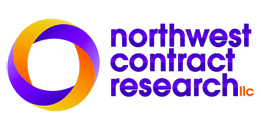Measuring Color of Blush Apples
with Image Analysis Software
SD Cockfield and ER McCormick
Northwest Contract Research, LLC
Brewster WA
Northwest Contract Research has provided color evaluation of fruit using two methods: running the fruit on a commercial sorter and evaluating individual fruit with a subjective score. We will continue to offer data from commercial sorting equipment. However, when more detailed measurements are necessary, we have replaced subjective evaluation with a more precise, standardized method. This report describes our equipment, software, and procedures used to evaluate the color of blushed fruit (in this case ‘Gala’ and ‘Fuji’ apples). The possibility of using studio digital images to evaluate fruit quality was brought to our attention by the work of Winzeler and Schupp (2011). Our lab developed a method using their basic guidelines. In all, our methods have the same advantages as subjective human observation. However, the new methods will provide objective, consistent results from sample to sample and especially from trial to trial.
Our Color Analysis Method
Our equipment follows the recommendations of Winzeler and Schupp (2011). Apples samples are spread out in a light box with LED illumination of a spectral distribution similar to natural daylight (SORAA brand PAR 38). Each light has a diffuser cloth mounted on the lamps for even lighting. The fruit are quickly spread out on their sides on black velvet in the light box and a digital image captured with a Canon 7D Mark II fitted with a macro lens. The RAW image is calibrated with Adobe Lightroom software in conjunction with the X-Rite ColorChecker Passport System. Winzeler and Schupp (2011) used the CIE L*Cab*hab color space instead of RGB for image analysis. We use RGB even though they cautioned that this system would be device-dependent. Our lab is capturing all data with the same devices and the RGB system is easy to use. The calibrated image is saved in TIFF format.
Our calibrated images are analyzed with Image-Pro Premier software (MediaCybernetics). The software combined with an Excel spreadsheet counts the apples and measures their longitudinal cross sectional area in cm^2 (plate 1). Next, it determines the spots of glare on the surface of waxed fruit and excludes the spots from the analysis. Only waxed fruit produce this glare. The area of red blush is determined on each apple and the % of area blushed calculated (assuming the apple to be a flat surface). Finally, the software determines the maximum intensity of red for each apple.
Evaluation of Groups of Apples
The system was evaluated by comparing % blush and red intensity (lumens) with estimates from an experienced technician. Fifty apples could fit into the light box and were arranged so that their locations could be tracked. Each apple was photographed three times in a different rotation and the data combined. The technician rated each apple as approximately 0, 25, 50, 75, and 100% covered with blush and the intensity of blush was expressed on a scale of 0-5, with 5 being the highest possible intensity for this cultivar (plate 2). We evaluated nine sets of ‘Gala’ or ‘Fuji’ apples and found their blush qualities to be the same.
 |
| Plate 2. ‘Gala’ apples with different levels of blush intensity 0 (left) to 5 (right). |
In general, the technician overestimated the area of blush except at very high levels (Fig. 1). Winzeler and Schupp (2011) found that their experts tended to overestimate % blush at lower actual values and underestimate at higher actual values. We have noticed that a human counts numerous pale blush areas as a single contiguous area whereas the software marks and measures each area, thus calculating a smaller percentage. However, the software sorted the samples from lowest to highest % blush almost the same as did the technician, except for very similar samples. The mean red intensity for the groups of apples had a little less agreement between software and human estimates (Fig 2). The technician disregarded tiny, very pale areas of blush. In spite of these differences, when the computer reported apples had a higher red intensity than other apples, this was usually independently confirmed by the technician. The correlation between software and human evaluations (R-squared) is high for groups of apples.
In the above analysis, with relatively few fruit per image, we rotated the fruit and took multiple images. With larger samples, we will not be taking multiple images. This allows a more efficient use of the technician’s time. Our method was evaluated by taking three images of apple samples of different quantities, rotated between each image, and determining the Coefficient of Variation (CV) between measurements from each image. The % blush had moderate variability between images when the samples contained 10 to 50 apples (Fig 3). The variability of red intensity fluctuated at much lower levels when small samples of apples were tested (Fig 4). As the samples increased to 100 to 200, the CV of % blush and red intensity remained at less than 1%. A single image of 200 apples per plot can provide reliable calculations of % blush and red intensity. This will be the standard method used in the Northwest Contract Research Color Lab.
Reference Cited
Winzeler, H. E and J.R. Schupp. 2011. Image Analysis of Blush Coverage Extent and Measures of Categorical Blush Intensity in ‘Honeycrisp’ Apples. HORTSCIENCE 46(5):705–709.







